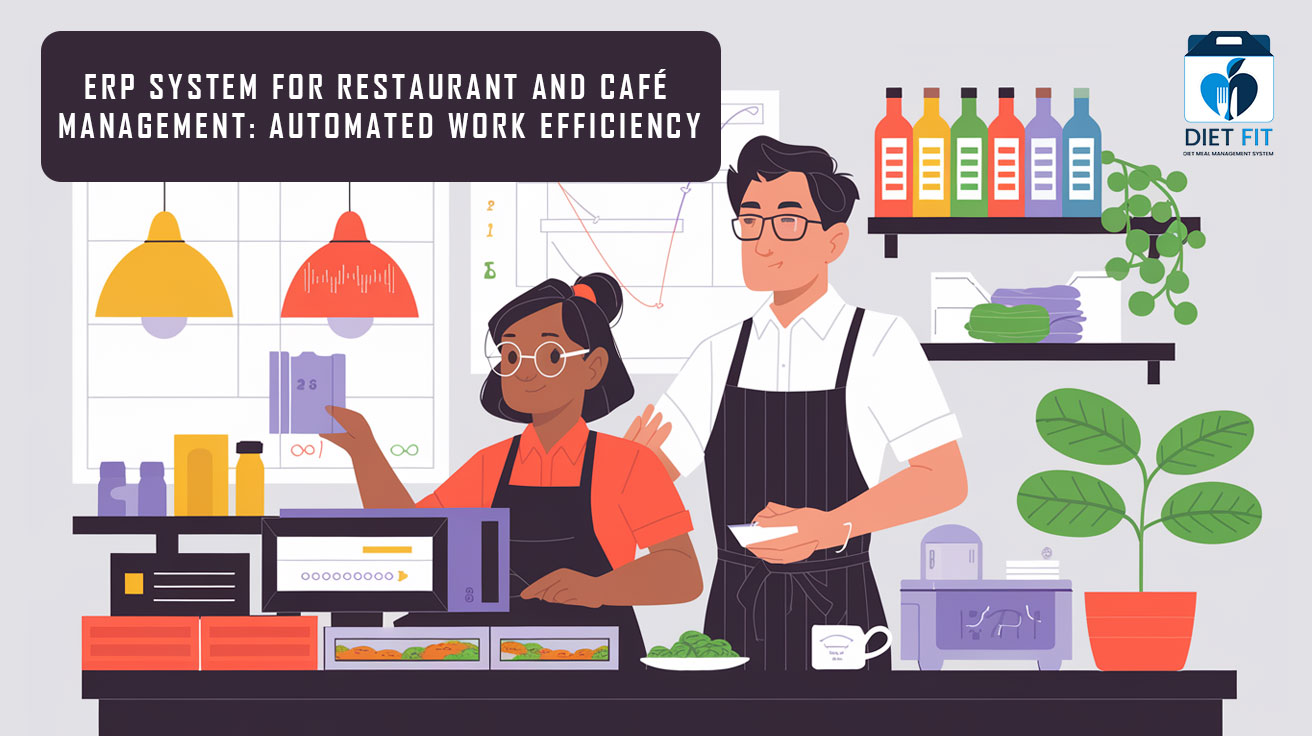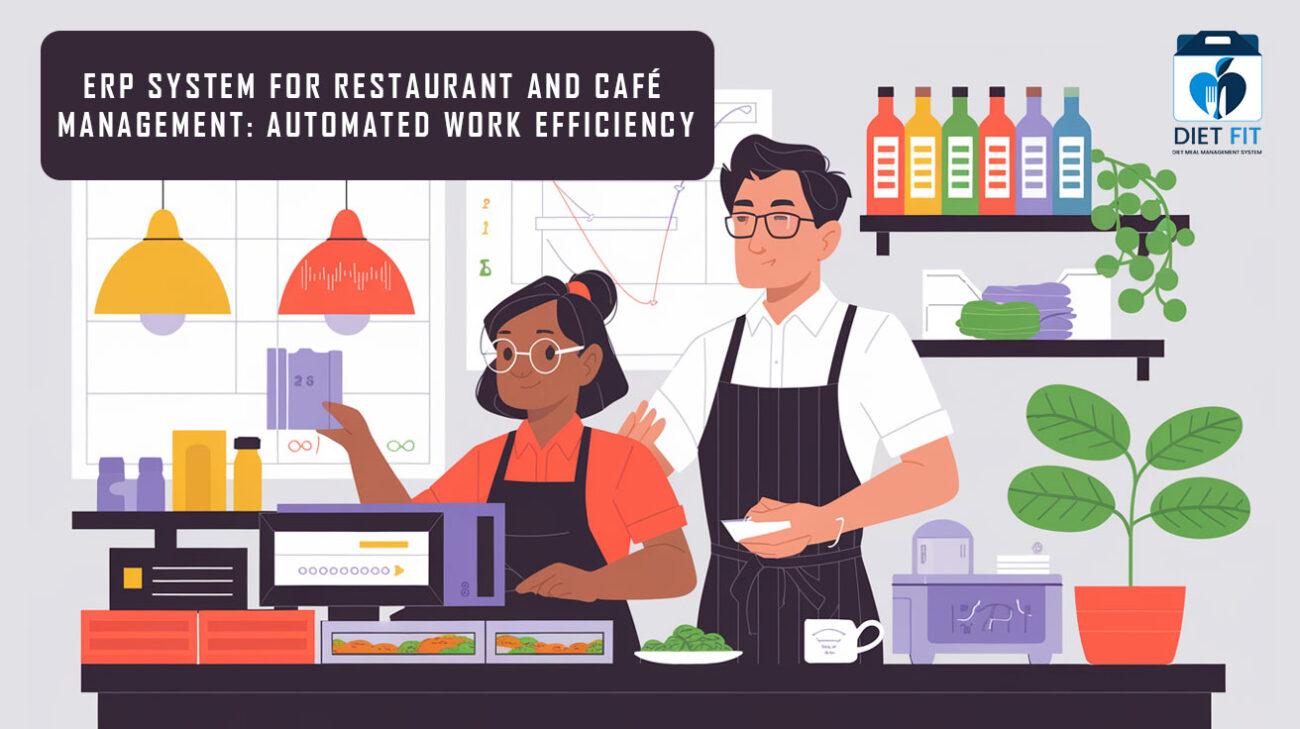ERP System for Restaurant and Café Management: Automated Work Efficiency


The food service industry, particularly restaurants and cafés, is rapidly paced. It needs smooth operations. Restaurant owners and managers are faced with daily challenges. They include managing inventory and providing excellent customer service. Without the right tools, these tasks can become difficult. This is where an ERP system for restaurants becomes essential. ERP, or Enterprise Resource Planning, systems integrate various business processes. They improve efficiency and help businesses to scale.
This article will explore how an ERP system can transform managing restaurants and cafés. It can automate work processes. This will improve efficiency, customer satisfaction, and business growth. No matter the size of your food business, the right café software can be a game-changer.
Understanding ERP Systems for Restaurants and Cafes
An ERP system is a software platform. It integrates a business’s various functions into one system. It has modules for inventory, order processing, employee scheduling, and CRM. These are for restaurants and cafés. An ERP system is better than standalone software. It centralizes data and processes. This leads to better decisions and streamlines operations.
For smaller places, like cafés, the focus might be on features. These include café management software that streamlines inventory tracking, processes orders, and engages customers. Larger restaurant chains may need more robust systems. They must manage multiple locations, complex supply chains, and large staff rosters. All businesses aim to implement an ERP system. It should create a seamless flow. This will reduce errors, improve customer service, and boost profits.
Key Features of ERP Systems
Inventory Management
One of the most critical components of any ERP system is inventory management. This feature automates three tasks. It tracks stock levels, manages suppliers, and forecasts inventory needs using historical data. For restaurants and cafés, efficient inventory management means three things. It must reduce waste, ensure ingredient availability, and optimize purchases.
Automated inventory tracking helps prevent over-ordering or stockouts. Both issues can hurt customer satisfaction. Integrating inventory management into your café software allows real-time stock visibility. This improves planning and cost control.
Order Management
In the modern restaurant industry, managing orders from multiple channels is complex. These channels include in-house dining, takeout, and online orders. An ERP system simplifies this process by centralizing order management across all channels. This ensures orders are processed accurately and quickly. It reduces wait times and improves the customer experience.
For cafés, this may mean integrating with mobile ordering apps or delivery services. All orders should go into a single system. Larger restaurants can benefit from advanced features, like table management. It helps to optimize seating and turn tables faster. Automating order management lets restaurants focus on high-quality food and service.
Labor Management
Managing staff is another critical area. An ERP system can greatly improve it. An ERP for restaurant chains has labor management features. They include scheduling, time tracking, payroll, and performance monitoring. These tools ensure scheduling the right number of staff at peak times. They reduce labor costs and improve service quality.
Automating payroll processing reduces errors and ensures compliance with labor laws. This is crucial for a positive work environment and avoiding costly penalties. For smaller cafés, labor management tools can simplify scheduling. They ensure that they cover shifts without overstaffing or understaffing.
Customer Relationship Management (CRM)
Customer satisfaction is at the heart of any successful restaurant or café. A good restaurant and café ERP system should have CRM features. They should help personalize customer interactions, track preferences, and manage loyalty programs.
A CRM module might track customer order histories. This would let staff make personalized recommendations or offer loyalty rewards. In a café, it could mean remembering a regular’s favorite drink. Or it could mean offering a birthday discount. Integrating CRM with other ERP features can help restaurants. It can create a seamless, personalized experience for customers. This will keep customers coming back.
Benefits of Implementing ERP
Operational Efficiency
A key benefit of an ERP system is its ability to automate repetitive tasks. This frees up staff to focus on more important work. For instance, automated inventory management saves time on manual stock checks. Order management tools streamline the flow of orders from the kitchen to the table. This efficiency saves time and cuts error risks. That can cause customer dissatisfaction or financial losses.
Enhanced Decision-Making
An ERP system provides real-time data and analytics. It gives restaurant managers the insights to make informed decisions. Access to accurate, timely data enables better planning. It helps with tasks like adjusting menu prices based on ingredient costs. And, it aids in more efficient staff scheduling. For example, an ERP system might show a dish’s high profits. The restaurant would then promote it more.
Improved Customer Satisfaction
Streamlined operations directly translate into better customer experiences. Quick, accurate order processing and prompt staff help raise satisfaction. CRM tools in the ERP system also allow for personalized service. This can enhance the dining experience and foster customer loyalty.
Scalability
As your business grows, your operational needs will evolve. Make an ERP system to grow your business. It supports new locations, services, and higher customer volumes. This scalability ensures your systems can grow with you. It will provide high standards of service and efficiency.
Steps to Implement an ERP System
Assess Needs
The first step is to assess your restaurant or café’s needs. This involves finding where automation can have the most impact. It’s about inventory management, order processing, or labor scheduling. Some businesses need robust restaurant automation tools. Others need simple solutions focused on a few key areas.
Choose the Right ERP
Once you’ve identified your needs, choose the right restaurant and café ERP solution. This involves comparing different ERP systems based on their features, cost, and support. Choose a system that fits your business’s size, complexity, and growth plans. A small café might want low cost and ease of use. A large restaurant chain might want advanced features, like multi-location management and analytics.
Implementation Process
Implementing an ERP system requires a structured approach to ensure a smooth transition. This process incorporates data transfer, system setup, and employee instruction. Data migration involves transferring existing data to the new system. This includes inventory records and customer information. System configuration tailors the ERP software to your needs. It sets up modules and workflows that align with your operations. Finally, staff training ensures your team can use the new system. This minimizes disruptions to daily operations.
Post-Implementation Support
The implementation process continues once the ERP system is up and running. Ongoing support and updates are vital. They help adapt the system to your changing needs. Reliable support is vital. It ensures your ERP system delivers value. It helps with new features, software integration, and troubleshooting issues. Regular updates also keep the system secure and compliant with industry standards.
Example
Successful ERP implementations in restaurants and cafés show their power. They can transform businesses. A busy café using restaurant ERP might see faster orders and better inventory. This would boost customer satisfaction and lower costs.
A large restaurant chain that adopted an ERP system could see improved coordination, better supply chain management, and better financial reporting. These examples show the real-world benefits of ERP systems. They make a strong case for adopting them.
Conclusion
In today’s tough food service industry, an ERP is necessary for restaurant chains and small cafés. It’s no longer a luxury. An ERP system automates routine tasks and centralized operations. It lets restaurant owners focus on what matters: great food and service.
Whether you run a small café or a restaurant chain, the right restaurant ERP system can help. It can boost efficiency, improve customer satisfaction, and support growth. Choose the right system and follow a structured process. This will ensure your business can meet today’s market demands.
